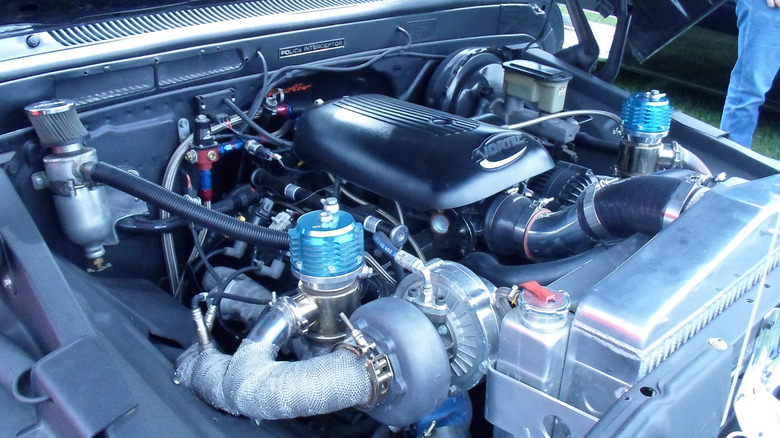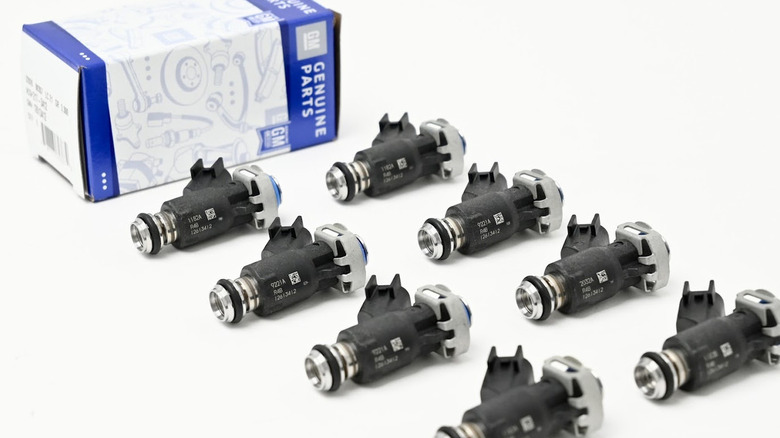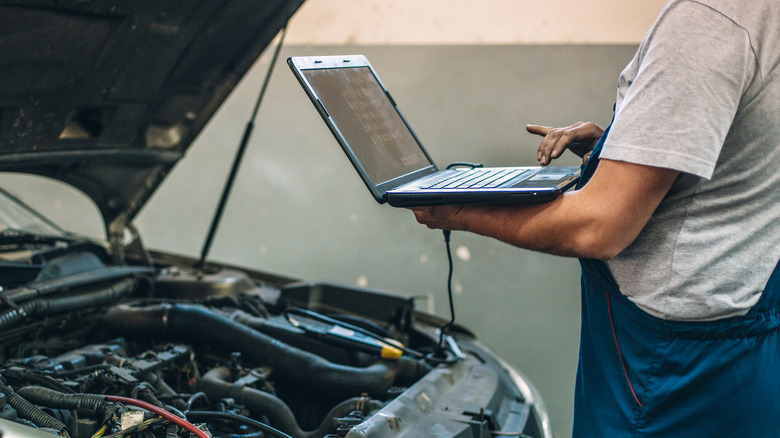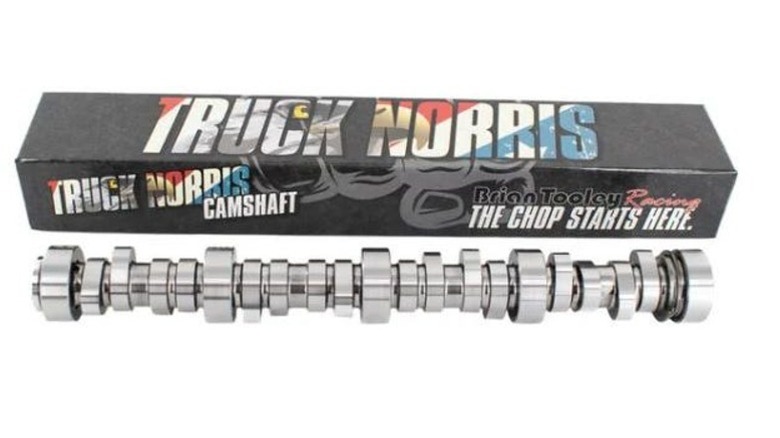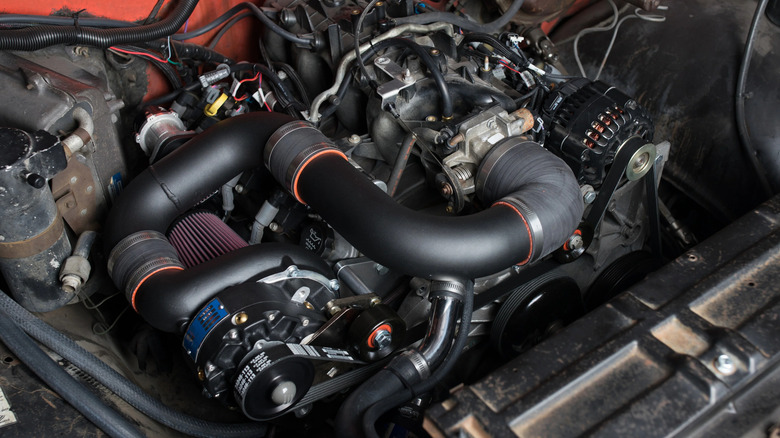5 Of The Best Upgrades For A 5.3L Vortec V8 Engine
Modifications for your 5.3L Vortec V8 engine are a lot like eating potato chips ... you can't stop at just one. It starts innocently enough with a cold air intake, because hey, who doesn't want better airflow, right? That's totally reasonable. Then you start browsing forums at 2 a.m., and suddenly you're convinced you need something else to really wake your engine up.
Before you know it, you're $3,000 deep into modifications, trying to justify why your latest purchase is totally essential for ... uh ... reliability. Yeah, that's it. But honestly? There are worse ways to spend your money. At least this ensures your truck slaps a permanent grin on your face every time you hit the gas. These five upgrades will transform your mild-mannered daily driver into something that makes you take the long way home just because. Your wallet has been warned. Now let's talk about turning that sleepy 5.3L into an absolute weapon.
Intake, headers, and exhaust
First up, the holy trinity of engine breathing: intake, headers, and exhaust. For the intake, if you're ready to spend a little, go for a real cold air intake (CAI), like the Volant Closed Box Air Intake, not the 'looks cool but does nothing' eBay special. A proper CAI pulls cooler air from outside the engine compartment. And more oxygen makes bigger booms, which equals more power. Plus, that sweet turbo-esque whoosh when you floor it is pure mechanical ASMR. On a ramen-noodle budget? At least swap out the factory intake tube.
Now, it's time to say goodbye to your stock exhaust manifolds. Long tube headers are a significant upgrade (if you've got the room). They offer excellent scavenging, which means spent gases get yeeted out faster, freeing up ponies you didn't know were trapped in there. The result? Your highway merges will feel like launch mode, and hills start to look more like speed bumps.
Finally, the exhaust. A quality dual setup gives you that perfect balance of bark and bite. Want to wake the dead? Flowmaster Super 10s will let the whole neighborhood know you're home. If you prefer something more refined but still meaningful, MagnaFlow's got your back. Either way, once you hear that first deep-throated growl, you'll be finding excuses to rev it at stoplights just to watch people turn their heads.
Fuel injectors and pump
Your stock 5.3L Vortec injector is rated at 22 to 25 lb/hr, basically taking on the role of the fun police of your fuel system, cutting the party off at around 380 horsepower. Push past that, and they simply can't feed the beast. The factory pump is a little more generous, holding out until about 430 wheel horsepower, but if you're daydreaming about a lumpy cam or a boost-fed grin machine, both will wave the white flag pretty quickly.
For most mild builds, the smart money starts with 8.1L truck fuel injectors. They're the Goldilocks solution, offering more flow than stock without going overboard, perfect for naturally aspirated setups flirting with 450 horsepower. Just don't forget they need proper tuning to work right. This isn't plug-and-play territory. Planning something really wild? The 50 lb/hr L96 Flex Fuel injectors can handle whatever madness you're cooking up.
On the pump side, you've got plenty of options. Drop-in modules and external pumps make for easy upgrades, while voltage controllers and hotwire kits can squeeze a little more out of what you've got. Feeling ambitious? Add a bigger pickup and fatter fuel lines so your Vortec never goes thirsty.
Custom tuning
There's no easy way to put this, so here it is straight: Your truck's computer is holding your engine back. Stock tuning is conservative, designed for fuel-economy regulations, with just enough performance to get you around town. But custom ECU tuning can essentially rewrite the entire playbook for how your 5.3L Vortec V8 runs and drives.
A good tune will sharpen up throttle response, so your truck actually reacts when you ask it to do something instead of thinking about it for a few seconds first. It can also bump up those shift points if you've got an automatic, so your transmission knows to hang onto gears a little longer and let that engine sing in its power band. But here's the real kicker: A proper tune can unlock horsepower you didn't even know was hiding in there. How? Oftentimes, simply ensuring that all the mods you've installed work together seamlessly is enough.
Your custom tuning path depends on your style. You can start with a basic mail-order tune, like Diablew Tune, but for even better results, nothing beats a dyno tune. A professional tuner will optimize every parameter — fuel, timing, shift points — to match your exact setup. Or, if you're tech-savvy, you can dive into tuning software by HP Tuners and the like (just be ready for a steep learning curve).
Performance camshaft
If you want to completely rewrite your 5.3L's personality, nothing does it like a performance camshaft. More than any other part, the cam decides whether your engine is polite and reserved or loud, rowdy, and looking for trouble. With this upgrade, you can turn your daily driver into a full-blown muscle truck with an attitude problem.
The camshaft is a spinning rod with lobes on it that tell your engine's valves when to open, how far to open, and how long to stay open. A performance cam uses more aggressive lobes to hold the valves open longer, cramming more air and fuel into the cylinders for a much bigger bang. The glorious side effect is that signature, lumpy idle — a sound that's pure music to any gearhead's ears. Two fan-favorite grinds are the Texas Speed Chopacabra for maximum lope and the Brian Tooley Racing Truck Norris for big gains across the entire power band.
You do need to choose your cam wisely. A wild race cam might sound incredible, but it'll make driving in traffic feel like you're fighting your truck every inch of the way. So, you might want to go with something a little less aggressive for a street-friendly build. Keep in mind that a cam swap isn't just about the camshaft either. You'll need stronger valve springs to handle the extra lift. A complete cam kit is your best bet, and it's wise to swap seals or any tired components while everything's open.
Forced induction
This is where things get super serious. Turbo or supercharger, it's your call. Either way, you're basically strapping a rocket to your 5.3L and telling physics to hold your beer. In simple terms, forced induction crams more air into your engine than it could ever suck in naturally. More air means you can burn more fuel, and more fuel means more power. A lot more power — as in, is this even the same truck — levels of power?
Turbochargers use your exhaust gases — stuff you're literally throwing away — to spin a turbine that force-feeds your engine. There's a tiny bit of lag while it spools up, but when it hits, your truck transforms into a pavement-punishing beast. Plus, you can still pretend to care about gas mileage when you're not busy melting rubber. Superchargers? Pure instant gratification. They're belt-driven, so there's no lag, just immediate, tire-shredding power the second you mash the throttle. But since they're always working, your gas mileage is going to take a hit even when you're driving like a saint.
Whichever route you choose, do it right: beef up your fuel system, make sure the engine internals can handle the beating, and get a tune to keep everything from exploding in spectacular fashion. Then buckle up, because once you feel that boost kick in, naturally aspirated engines aren't going to cut it anymore.
